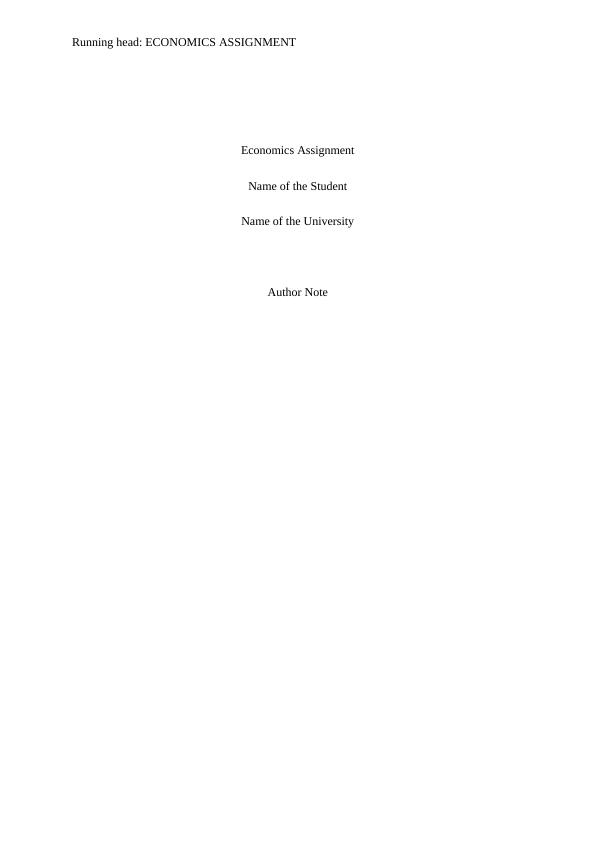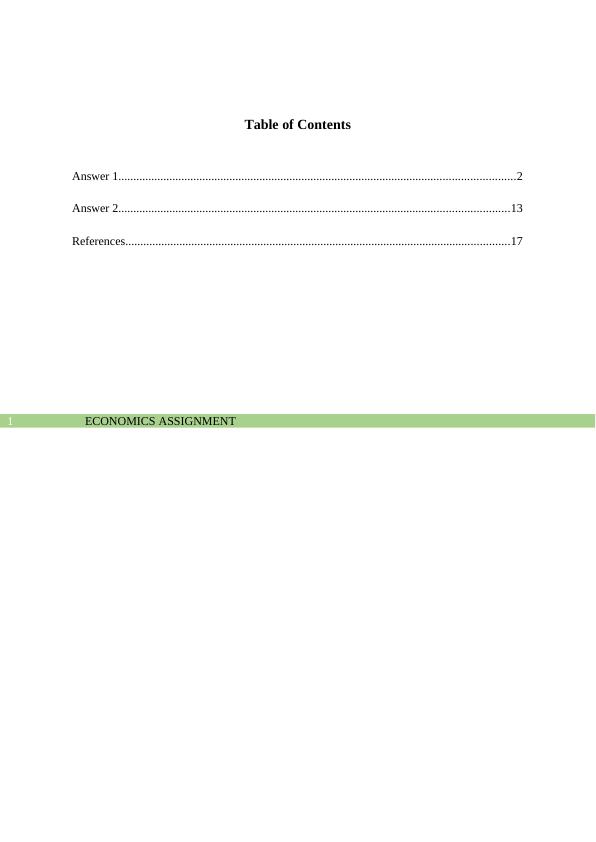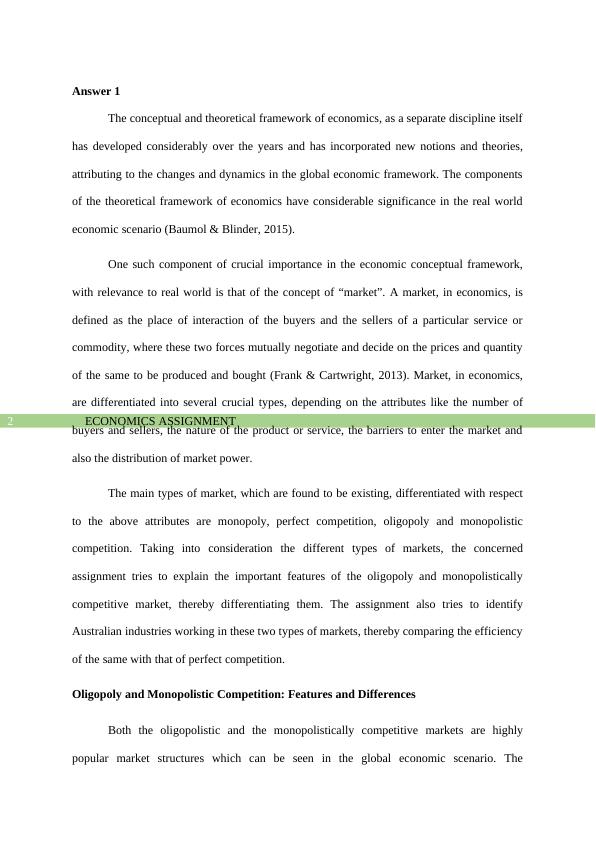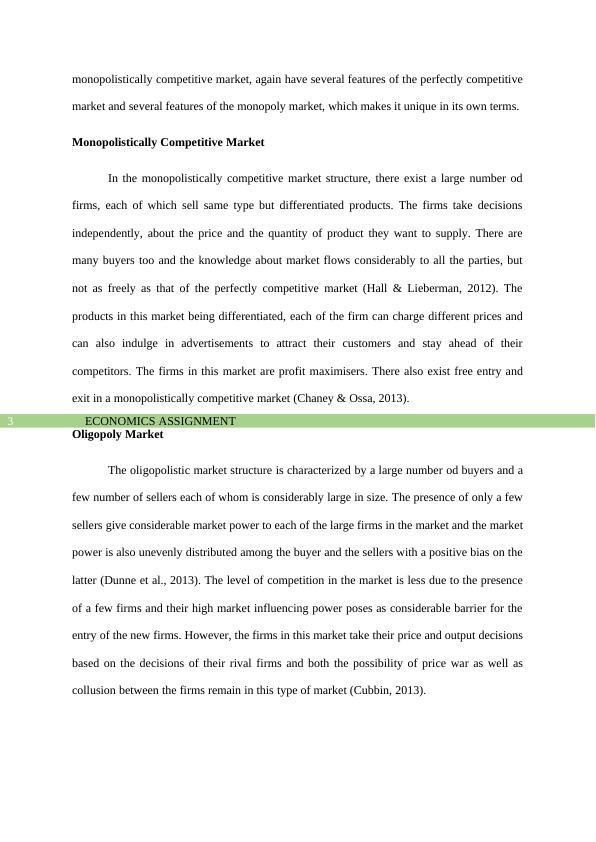Theoretical Framework of Economics - PDF
20 Pages4226 Words246 Views
Added on 2021-05-27
Theoretical Framework of Economics - PDF
Added on 2021-05-27
ShareRelated Documents
Running head: ECONOMICS ASSIGNMENT Economics AssignmentName of the StudentName of the UniversityAuthor Note

ECONOMICS ASSIGNMENT 1Table of ContentsAnswer 1....................................................................................................................................2Answer 2..................................................................................................................................13References................................................................................................................................17

ECONOMICS ASSIGNMENT 2Answer 1 The conceptual and theoretical framework of economics, as a separate discipline itselfhas developed considerably over the years and has incorporated new notions and theories,attributing to the changes and dynamics in the global economic framework. The componentsof the theoretical framework of economics have considerable significance in the real worldeconomic scenario (Baumol & Blinder, 2015). One such component of crucial importance in the economic conceptual framework,with relevance to real world is that of the concept of “market”. A market, in economics, isdefined as the place of interaction of the buyers and the sellers of a particular service orcommodity, where these two forces mutually negotiate and decide on the prices and quantityof the same to be produced and bought (Frank & Cartwright, 2013). Market, in economics,are differentiated into several crucial types, depending on the attributes like the number ofbuyers and sellers, the nature of the product or service, the barriers to enter the market andalso the distribution of market power. The main types of market, which are found to be existing, differentiated with respectto the above attributes are monopoly, perfect competition, oligopoly and monopolisticcompetition. Taking into consideration the different types of markets, the concernedassignment tries to explain the important features of the oligopoly and monopolisticallycompetitive market, thereby differentiating them. The assignment also tries to identifyAustralian industries working in these two types of markets, thereby comparing the efficiencyof the same with that of perfect competition. Oligopoly and Monopolistic Competition: Features and Differences Both the oligopolistic and the monopolistically competitive markets are highlypopular market structures which can be seen in the global economic scenario. The

ECONOMICS ASSIGNMENT 3monopolistically competitive market, again have several features of the perfectly competitivemarket and several features of the monopoly market, which makes it unique in its own terms. Monopolistically Competitive Market In the monopolistically competitive market structure, there exist a large number odfirms, each of which sell same type but differentiated products. The firms take decisionsindependently, about the price and the quantity of product they want to supply. There aremany buyers too and the knowledge about market flows considerably to all the parties, butnot as freely as that of the perfectly competitive market (Hall & Lieberman, 2012). Theproducts in this market being differentiated, each of the firm can charge different prices andcan also indulge in advertisements to attract their customers and stay ahead of theircompetitors. The firms in this market are profit maximisers. There also exist free entry andexit in a monopolistically competitive market (Chaney & Ossa, 2013). Oligopoly Market The oligopolistic market structure is characterized by a large number od buyers and afew number of sellers each of whom is considerably large in size. The presence of only a fewsellers give considerable market power to each of the large firms in the market and the marketpower is also unevenly distributed among the buyer and the sellers with a positive bias on thelatter (Dunne et al., 2013). The level of competition in the market is less due to the presenceof a few firms and their high market influencing power poses as considerable barrier for theentry of the new firms. However, the firms in this market take their price and output decisionsbased on the decisions of their rival firms and both the possibility of price war as well ascollusion between the firms remain in this type of market (Cubbin, 2013).

End of preview
Want to access all the pages? Upload your documents or become a member.
Related Documents
Economics Assignment: Market Structures, Non-Price Competition, Mutual Dependence, Kinked Demand Curvelg...
|8
|1536
|170
Tax Benefits to Existing Firm | Assignmentlg...
|8
|1227
|85
Economics Assignment: Supply & Demandlg...
|23
|4439
|118
ECON20039 Perfect Competition and Monopolistic Competition : Assignmentlg...
|23
|4137
|50
Monopoly and Monopolistic Competition in Australia's Industrial Sectorslg...
|15
|3211
|187
Business Economics Assignment (Doc)lg...
|8
|2264
|27
